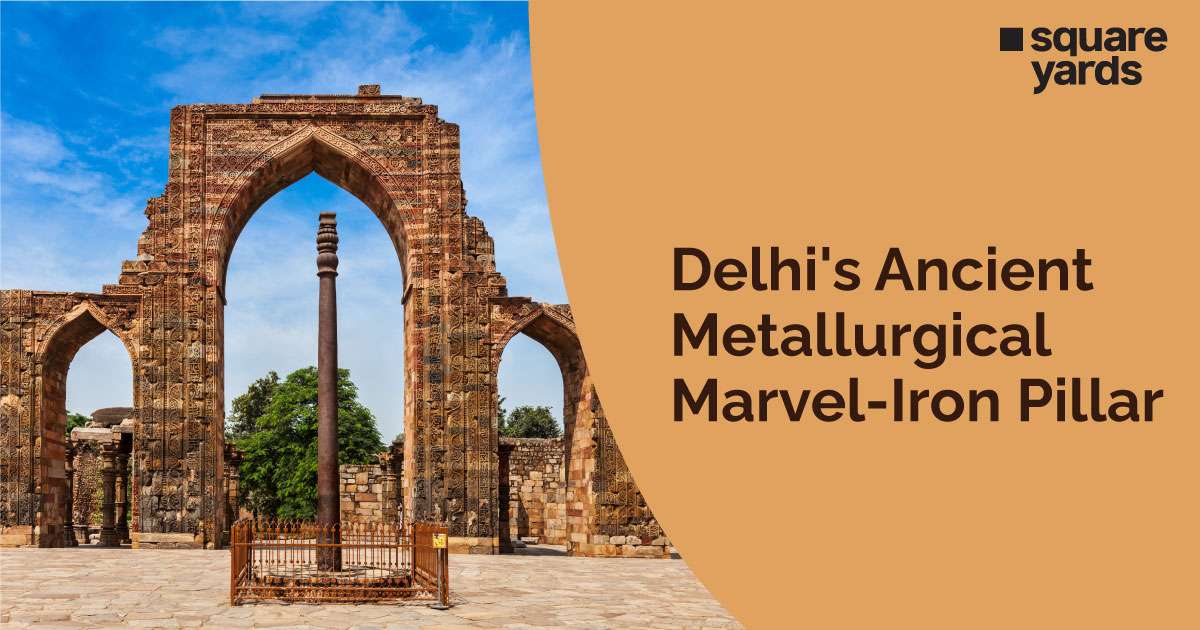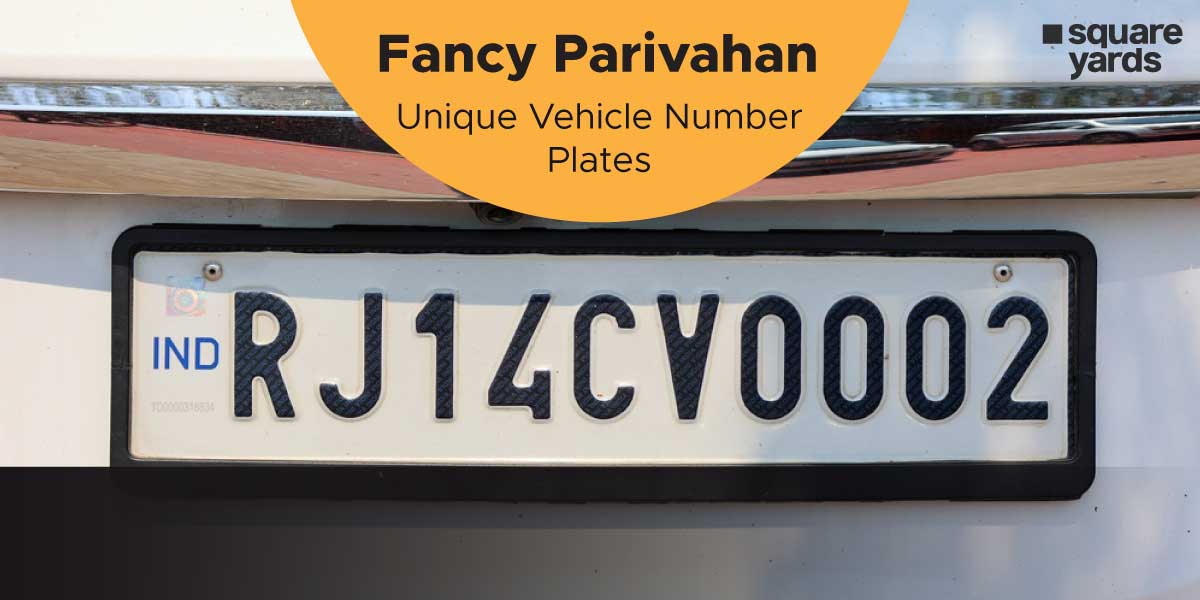Amidst Delhi’s layered historical landscape stands an enigmatic structure that is over a thousand years old, defying time and nature. Rising majestically to a height of 24 feet, the Iron pillar graces the courtyard of the Quwwat Ul Mosque within the Qutub Complex, which also houses the magnificent Qutub Minar in Mehrauli.
Composed of 6 tons of 98% wrought iron with trace elements like phosphorus- this enduring structure boasts metallurgical craftsmanship apart from its astounding resistance to corrosion. So, let’s get engulfed in the history, architecture, and intriguing facts of the incredible wonder that is the Iron pillar.
History of Iron pillar
Situated within the sprawling complex of Qutub Minar in Delhi, this colossal iron structure has managed to withstand the test of time as well as the scrutiny of historians and scientists. There are many versions of its origin. However, the inscriptions on its shaft were decoded by Indian scholars in 1838.
Dating back to the 4th century CE, the Iron pillar was erected during the reign of the Gupta dynasty, a period renowned for its cultural flourishing and advancements. According to historians, “Chandra” names have been mentioned in the inscriptions-which denote rulers of the Gupta Dynasty. There were two rulers during that era- King Samudragupta and Chandragupta II. It is still unclear which of the Gupta Kings made the Iron pillar. Just like these anecdotes, there are many theories about where the pillar was crafted.
According to folklore, the Iron pillar was erected at Udayagiri in Madhya Pradesh, from where it was transported to Delhi as a trophy by King Iltutmish in the 13th century after his victory. There’s more to these stories. Regardless of its origin, location, and purpose, this resilient structure embodies the cultural, historical, and architectural essence of our bygone era.
Key Facts about the Iron pillar
Rust-resistant Technology:
The Iron pillar’s corrosion resistance has puzzled scientists for centuries. The 98% purity of the iron combined with the protective iron hydrogen phosphate layer, showcases a high degree of metallurgical knowledge possessed by ancient Indian craftsmen.
Astronomical Significance:
Some researchers suggest that the Iron pillar could have been used as a sundial or a timekeeping device due to its remarkable alignment with the cardinal directions.
Visitor Traditions:
It is a common tradition among visitors at the Qutub Complex to stand with their backs to the pillar and attempt to encircle it with their arms. The myth is that successfully encircling the pillar brings good luck.
Lost Garuda Image:
The Garuda image that once graced the top of the Iron pillar has long been missing.
A Symbol of National Metallurgical Excellence:
The Iron pillar is a historical marvel and a symbol of India’s ancient metallurgical excellence.
The Enigma of the Inscription:
The Iron pillar bears an inscription in Sanskrit etched into its surface, which is attributed to King Chandragupta II.
Acoustic Resonance:
An intriguing aspect of the Iron pillar is its ability to produce a resonant metallic sound when struck.
Protected Monument:
The Iron pillar in the Qutub Complex has been designated as a UNESCO World Heritage Site.
Architectural Design of the Iron pillar
Standing proudly on an artistically carved base, the Iron pillar has an impressive height of 7.2 metres, a diameter of 48 cm and a weight of 6.5 tonnes. The crowning glory of the Iron pillar is its perfectly symmetrical capital—a bell-shaped structure reminiscent of a lotus bud. The capital, adorned with intricate carvings, speaks about the hint of its origin. However, the exact location is a mystery and still unwrapped.
In the middle, there is a prominent indentation approximately 400 cm from the ground, which hints at a dramatic event in the pillar’s history. It is believed that a cannonball, fired at close range, caused this damage. Legend has it that Nadir Shah—in 1739—ordered the destruction of the Iron pillar, fueling speculations about the presence of precious jewels hidden within.
The intriguing aspect of the Iron pillar’s architecture is its unparalleled corrosion resistance. It has remained standing, untarnished by rust, for over 1600 years. Scientists and researchers have been working on the reasons behind it.
The iron used in its construction contains albeit a few but high-quality elements of phosphorus, which forms a protective layer. Another reason is Delhi’s dry and less humid climate, allowing the Iron pillar to withstand the test of time.
Location, Timings and Entry Fees for the Iron Pillar
Qutub Minar Iron pillar height: 7.21 meters
Iron pillar built by: Chandragupta II
Iron pillar location: Qutub Complex in Mehrauli, New Delhi.
Nearest Metro Station: Qutub Minar metro station.
Iron pillar timings: 6 AM to 6 PM.
Fees: INR 10 per person for Indians.
INR 250 per person for foreign tourists.
Ways to Reach the Iron Pillar
Situated in the Mehrauli area of Delhi, the Qutub Complex is easily accessible, thanks to Delhi’s various modes of transportation.
By Metro:
The Delhi Metro is a convenient and efficient way to reach the Qutub Complex. The Qutub Minar Metro Station, located on the Yellow Line, is just a stone’s throw away from the site.
By Bus:
Delhi’s extensive bus network connects different parts of the city, including the Qutub Complex. Various bus routes pass through Mehrauli, allowing visitors to get off near the complex and enjoy a leisurely stroll to the Iron pillar.
By Car or Cab:
Hiring a cab is a viable option for those who prefer the convenience of private transportation.
Best Time to Visit the Iron pillar
Considering Delhi’s infamous sweltering summers and chilly winters, it’s best to plan your visit to enhance your experience. October to April are the best months to visit the Iron pillar in the Qutub Complex. Opt for morning hours to avoid the crowd. It is the perfect time to relish the beauty and for some candid clicks.
Places to Visit Near Qutub Iron Pillar
After marvelling at the Iron pillar, consider visiting these nearby attractions:
Qutub Minar:
The tallest brick minaret in the world, the Qutub Minar, is a UNESCO World Heritage Site and the focal point of the complex.
Alai Darwaza:
A grand entrance gate built by Ala-ud-din Khilji, the Alai Darwaza is an architectural masterpiece adorned with intricate decorations and calligraphy.
Quwwat-ul-Islam Mosque:
Located within the Qutub Complex, this mosque is one of the earliest examples of Indo-Islamic architecture in India.
Tomb of Iltutmish:
This mausoleum fused with Indian and Persian styles, houses the tomb of Iltutmish, a ruler of the Delhi Sultanate.
Preservation and Protection
There was a popular practice where visitors would attempt to encircle the pillar with their backs pressed against it, striving to make their hands meet behind it that could bring good luck. However, as more and more visitors engaged in this practice, the lower portion of the Iron pillar began to show signs of discolouration. The constant touch and movements were inadvertently eroding the protective rust layer that had kept the pillar pristine for centuries. In 1997, a fence was erected around the Iron pillar to safeguard this wonder from further damage.
A Mystical Pillar!
In the heart of Delhi’s historic Qutub Complex, the Iron pillar, an ancient marvel, stands testament to the artistic and engineering finesse of ancient India. The allure of this humble yet shining piece of iron is a beacon of history that refuses to fade.
FREQUENTLY ASKED QUESTIONS(FAQ’S)
Where is the Iron pillar located?
Nestled in the courtyard of the Quwwat-ul-Islam Mosque, Iron pillar in the Qutub Minar complex, Mehrauli, Delhi.
How to visit the Iron pillar?
Visiting the Iron pillar is convenient, either by metro, bus, or private transportation. The Qutub Minar Metro Station, on the Yellow Line of the Delhi Metro, is the fastest and most affordable option. There are several bus networks connected to the Mehrauli area. If you’re in the vicinity, you can choose to walk to the Qutub Complex and explore the site.
Why is the Iron pillar famous?
The Iron pillar in Qutub Complex, Delhi is famous for its historical significance dating back to the Gupta dynasty. The Iron pillar’s resistance to rust has baffled scientists for centuries. Moreover, the exquisite pillar crafted with intricate carvings and marvellous beauty is a striking example of ancient Indian artisans.
Why has the Iron pillar not yet rusted?
The actual reason still remains a mystery. However, there are many scientific theories which explain its unique metallurgical composition. The quality of the material used in construction and a high level of phosphorus form a thin protective layer of iron hydrogen phosphate hydrate on the surface. This anti-corrosive layer ensures its timeless glory.
How much time does it take to visit the Iron pillar?
The time required to visit the Iron pillar and explore the Qutub Complex depends on your level of interest, visitors often spend around two to three hours admiring the architectural beauty and its surroundings.
Which Metro station is near the Iron pillar?
The nearest Metro station to the Iron pillar is the “Qutub Minar Metro Station,” which is part of the Yellow Line of the Delhi Metro.
Who built the Iron pillar in Delhi?
The Iron pillar in Delhi was built during the reign of the Gupta dynasty in the 4th century CE. As per the historical inscriptions, it may have been commissioned by King Chandragupta II.










































